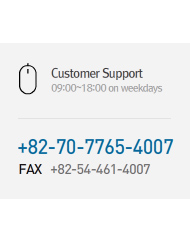Establish your image
Page info
Name Wilford / Date25-05-21 04:34 Hit5 Comment0Link
Contents
Building an art portfolio is a crucial step for any artist looking to establish themselves in the competitive art industry. A well-crafted portfolio can help you land job opportunities, attract new clients, and even secure exhibitions. However, creating a standout portfolio takes more than just throwing together a few favorite pieces. In this article, we'll explore the best practices for building an effective art portfolio that showcases your talent and style.
Before we dive into the nitty-gritty, it's essential to understand the purpose of an art portfolio. A portfolio is more than just a collection of your artwork; it's a tool that communicates your creativity to potential clients or employers. It's a representation of who you are as an artist, and it's often the first impression you make on a potential client or painting competition art director.
To build a portfolio that truly showcases your talent, start by curating a diverse range of work that represents your artistic style and skill level. Include a mix of traditional mediums, such as paintings, as well as digital art and design. This will help you showcase your versatility as an artist.
When selecting pieces for your portfolio, consider the following factors:
- Relevance: Does the piece fit within your design style?
- Quality: Does the piece demonstrate a high level of skill and craftsmanship?
- Originality: Does the piece showcase your viewpoint?
- Consistency: Does the piece fit within the overall theme of your portfolio?
In addition to selecting and organizing your pieces, consider the presentation and design of your portfolio. Use a clean layout that showcases each piece without overwhelming the viewer. Use plenty of white space to create a visually appealing and easy-to-navigate interface.
When it comes to showcasing your portfolio, there are a variety of options available. You can build a website, using platforms like Squarespace, or create a physical book or zine. You can also use online portfolio platforms, such as Behance, to showcase your work.
Finally, remember that your portfolio is a living document that should grow over time. As you continue to work and grow as an artist, update your portfolio with new and relevant pieces that showcase your growth and development. This will help you stay competitive and showcase your full range of skills and talents to potential clients and employers.
In conclusion, building an art portfolio is a crucial step for any artist looking to establish themselves in the industry. By following best practices, such as curating a diverse range of work, selecting and organizing pieces effectively, presenting and designing your portfolio, and regularly refining your content, you can create a standout portfolio that showcases your talent and style.
Warning: Use of undefined constant php - assumed 'php' (this will throw an Error in a future version of PHP) in /home1/icecap/public_html/theme/icecap/skin/board/basic_en/view.skin.php on line 149













